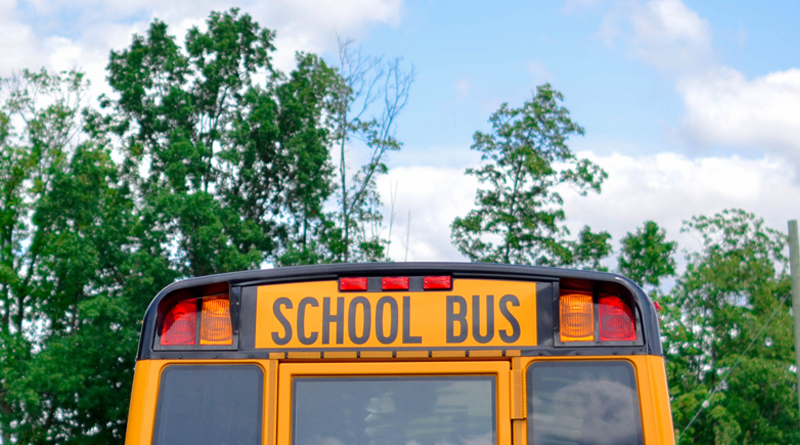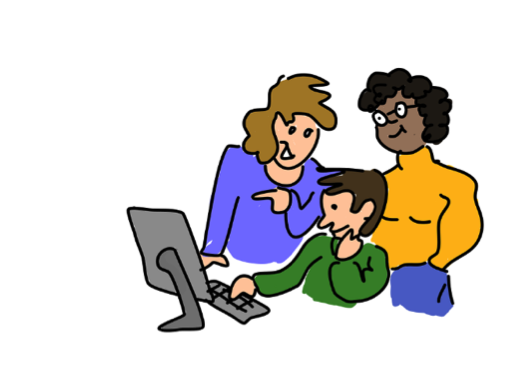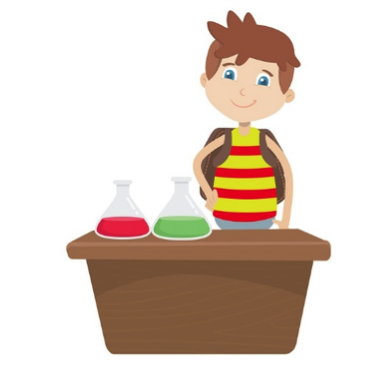
Extreme Makeover – Education Edition: Redesigning School Systems to Suit Students of All Abilities (Pt.2)
By Mathew Ryan Morin
This is continued from part one, which can be seen here.
Embracing personalized education

It all started in 1952. U.S. Air Force planes had technically advanced following the years after WWII, but there was a major complication. Fighter pilots were having difficulties fitting into the cockpit of their planes. The blame was put on the flight instructors, the technology, and the pilots themselves. It was assumed but not rationally proven that building average sized cockpits was the only approach to constructing all fighter planes. It wasn’t until an air force researcher named Gilbert Daniels, studied the issues and found that building ‘average’ sized cockpits was completely irrational. He concluded that there was no such thing as an ‘average’ sized pilot. As a result, the U.S. Air Force put a ban on building ‘average’ sized cockpits. This caused companies that built fighter planes for the U.S. Air Force to lobby. They ran with the argument that it would be too expensive to reconstruct planes that fit different sized pilots. It turned out that it wasn’t expensive at all. Today, thanks to the technology that came about in that event, we now have adjustable seats in our cars. Many of the U.S. Air Force’s top pilots would have never fit into a cockpit designed as “average”.
This story was presented in a TEDx Talk I recently watched by Todd Rose called The Myth of Average. His idea is that while the traditional education system continues to spend millions of dollars on trying to sustain a structure for the ‘average’ student, there is no such thing. There’s a dropout rate among 1.2 million high school students in the U.S. and 4.5% of high school dropout rates are from students who are gifted. These students who possess high analytical intelligence are leaving the system because it isn’t structured to support their way of thinking and learning. It’s estimated that over 50,000 gifted students drop out of their schools every year. The system’s ‘one size fits all’ structure – only centered on average – causes many intellectually gifted students, as well as creatively intelligent students, to struggle and/or fall behind.
As Todd Rose said in his TEDx Talk and I quote: “we’ve been content to blame the students, we blame the teachers, we even blame the parents.” We continue to blame each other, instead of looking internally at the way the whole traditional education system is structured. Todd Rose continues saying that ‘even though we have one of the most diverse countries in the world and even though it’s the 21st century, we still design our learning environments like textbooks for the average.” Just like it was inefficient to design an ‘average’ sized plane, it’s inefficient to sustain an ‘average’ sized system only designed for one form of human intelligence, one way of thinking and learning – as opposed to other forms of human intelligences, ways of thinking and learning. Todd Rose also points out that just as the pilots vary in dimensions of size, students vary in dimensions of mind. Their memory, language, knowledge, reading, vocabulary, curiosities and interests are all different.

The current structure of traditional education systems are designed mostly under the assumption that one path leads to success for all. That clearly couldn’t be more wrong. It’s a very limited assumption. I believe there’s more than one pathway that a student can take, which can lead them to their success. I believe the system has highly unrealistic expectations that all students must learn the exact same way at the exact same time, using the exact same resources, activities and assignments. Example: a teacher is teaching a classroom of 26 students, all of the students are expected to learn and understand what is taught through the same lessons and given assignments. 13 students understand the lessons and do great on the assignments, the other 13 don’t. The 13 students that didn’t understand the lesson fall behind, as the teacher and school struggle to figure out how to get them to catch up. The students with mid-level analytical intelligence that the traditional education system is mainly designed for get through, while the students with different forms of intelligences and students with high forms of analytical intelligences (gifted students) continually fall behind.
There is a structure that supports the ideas I’ve presented, it’s called personalized education.
Classroom Setting & Work Environment

The following descriptions are based on my research and own feelings/beliefs of what I believe a personalized education classroom setting and work environment should look like.
In a personalized learning environment, assignments, activities and resources are adjusted to fit the student’s intellect and way of learning. There’s more than one teacher in the classroom. The teachers present to the class the topics and/or frameworks of subjects that are to be learned. Then after presenting such topics and/or frameworks, they go around the tables to assist. They can independently or broadly teach and assist, either individual students or students in groups. They look over their student’s shoulders, sitting or standing at their learning stations and educating them, accordingly to their ways learning.
Assignments & Activities

Tools used for learning are implemented based on how a student receives information, not just limited to assignments such as physical handwritten tasks, reading and memorizing textbooks, copying and memorizing what’s on the board. They likewise include multiple other options to learn.
Ex: laptops, ipads, digital applications, videos, digital games, audio, physical objects and representations, visual aids, etc.
Examples of assignments and activities:

In one learning station, a group of students who learn more effectively through visuals, sit and watch videos.
In another, a group of students are playing around with a physical instrument, that being Newton’s Cradle and are learning about Newton’s Laws of Motion. A teacher is there guiding the students.
Nearby, a group of creative students are adding finishing touches to their tri-fold poster boards. Each student has researched and is presenting a chosen historical event that took place in America during the 1900s. A teacher is there assisting them.
A group of students are playing a mathematical game. A teacher is sitting down playing with them and educating them likewise.
A group of students are reading e-books and writing essays based on information they’ve gathered from what they’ve read.
A group of students sit with their laptops and earphones on, listening to an audiobook.
Technologies & Digital Tools For Student Data

The digital revolution is paving a new pathway for how students learn. Likewise, it also helps educators by giving them information about how students learn. The education system no longer has to limit itself to just standardized testing.
There are other approaches that can be helpful in determining a student’s progress. Data can be taken using new digital technologies, ex. algorithms and artificial intelligence.
For instance, when a student with analytical intelligence reads a digital textbook or ebook. Information can be collected on how long it takes them to read and how many pages the student has read. When a student with visual learning is watching a video, you can keep track on how many times and how long they watch each specific video (attention span and interest in the content they select). Analytics can then display these results to the teacher with information such as a student’s engagement with the contents they’re learning through (ex. digital textbooks, videos, audiobooks, digital games etc) what is their pace at completing specific assignments. Using the collected information, if a student is exhibiting interests in visual tasks, then you are going to assign that student with visual tasks and visual based teaching methods. If a student is showing an interest in reading digital textbooks, writing assignments and ebooks, then you are going to assign that student with analytical learning materials. If a student likes pasting posters together, then you are going to assign them with creative tasks and assignments.
Teaching Life Skills

Sad shock: 40 percent of gifted students are at risk of underperforming. These students who have an incredibly high analytical intelligence also struggle in the present, public education structure, not designed for their way of thinking and learning. Along with changing present learning methods, I believe there also needs to be methods put in place that strengthen positive traits in students. Why aren’t students with high analytical intelligence, and all forms of intelligence being taught good attributes and skills, that can help enhance their work habits and work ethic? Why aren’t students being taught such qualities as having self-awareness, self-advocacy, grit, improving work ethics, and emotional health? If students were taught these traits, I believe teaching these strategies in schools would help many of the present problems of today. The education system is supposed to prepare students for life. These are qualities that are important and necessary for life. They can help students develop the means for success, not just in their school settings, but life in whole.
I advocate for traditional education institutions to shift into a modern personalized structure because of my own personal experiences. As I previously established in Part-1. I believe it’s the best structure to implement because it supports all minds and focuses on the student. I hope that someday education systems will finally be structured to support all forms of learning and human intellect, for students of all abilities.
Photo by Element5 Digital on Unsplash

Hello, my name is Mathew Ryan Morin. I’m 25 years old and on the autism spectrum. I was diagnosed with PDD.NOS, ADD and Chronic Motor Tic Disorder. I was bullied by peers, discriminated, shunned, excluded and told that I would fail in life, by some adults during my years of public middle school. After leaving the public education system during that period, I relocated to a small private school called American Preparatory Academy. There I got the right support, resources and amazing teachers. As my life was shaped by past unpleasant experiences, the obstacles that I went through motivated me to change and eventually flourish. I’m now 25 years old and have made a name for myself on the internet. I started a YouTube channel in high school and received a wonderful following. I have been working to promote autism awareness, acceptance and action since 2011 for parents, teachers, caretakers and individuals on the spectrum. I’ve been self-teaching myself new forms of media, video, film, online business and marketing. I’m a new media creator, currently developing a business that puts my creative abilities to use.




